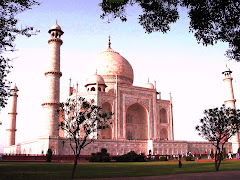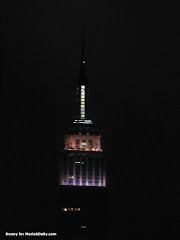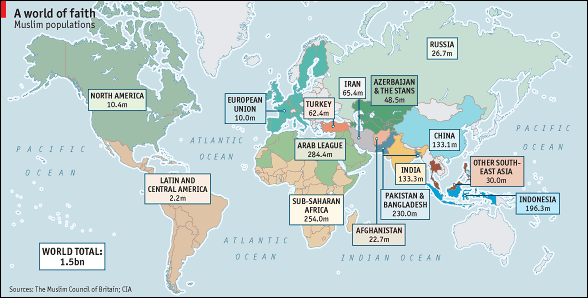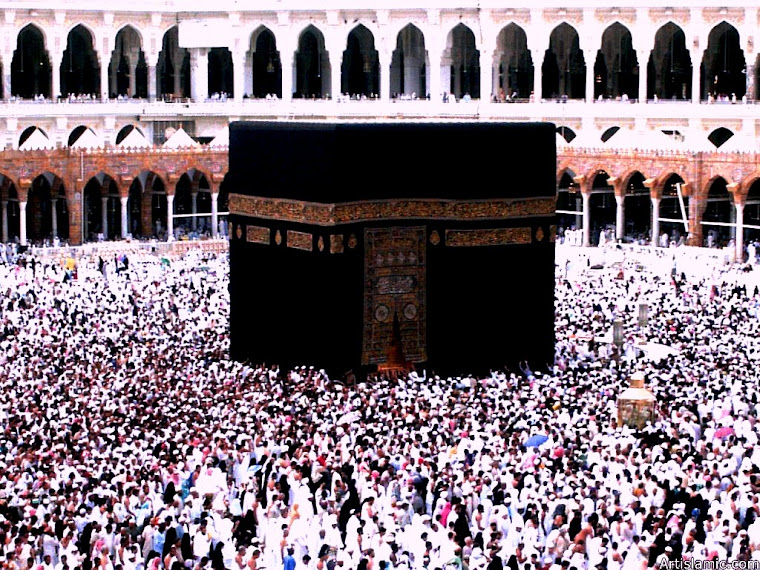Pan-Islamism is a political movement advocating the unity of Muslims under one Islamic governance or a Caliphate to be exact, which advocates the unity and independence of Muslims regardless of ethnicity, race, cultural orientations et al. This is actually the phenomenology used by al-Afghani in setting out his normative aspirations for a pan-Islamic civilization. By civilization, he meant the intellectual and moral achievements that contributed to the unity and greatness of a people. He strongly believed that the Muslim world could recover its lost glory and power if it would return to its fundamental teachings and, most importantly, would unite.[1]
Al-Afghani’s Introductory Ordeals
According to al-Afghani, the call for a pan-Islamic civilization was solely a political goal, not a religious one, meant to counter the infiltration of ideas from the West and the sense that Western society as a whole was to be imitated.[2]
Afghani argued throughout his life that Western civilization was not innately superior, it just happened to have the upper hand at that time because Muslim society was weak. Muslim society was, in his opinion, torn apart by internal division and immoral leaders.[3]
Afghani believed that to live in the modern world demanded changes in Muslim ways of organizing society, and that it must try to make those changes while remaining true to it. Islam, Afghani believed, was not only compatible with reason, progress and social solidarity, the bases of modern civilization, but if properly interpreted it positively enjoined them. However, he felt that this would be possible only if Islam was interpreted to make it compatible with survival, strength and progress in the world.[4]
In other words, Afghani believed that it was feasible for Muslims to regain their status and possession of the beautiful and the desirable; He felt it was the end of human activity and specifically of political activity to pursue this, and he felt strongly that there must be a way for Muslim countries to regain their power.[5]
Afghani felt that a united Islamic civilization was one answer to this problem. He felt that if all Islamic sects united, they could balance the threat from the West better than they could in their current divided state. He desired to unite all branches of the Islamic community in a program of self-strengthening that required theological distinctions to be played down -- including the Sunni/Shiite split -- in favor of a vague belief in the superiority of Islam that could appeal to everyone.[6]
Bernard Lewis argues that for Afghani, Islam was a civilization, potentially a world power, and only incidentally a faith; its basic demand was for loyalty rather than for piety. Afghani stressed the practical, political side of Islam, rather than its speculative or theological side.[7]
Specifically, Afghani called for an Islamic civilization that shared a common religion, common language and common faith. He stressed that in a pan-Islamic civilization, there would be no separation between church and state as there had been in the West. After all, in Islam, even from its earliest times, religion and matters of state, ethics, law and politics were blended and Islam does not make the western distinction between religion and politics.[8]
Research Problem
The researcher will try to answer vehemently the following inquiries:
1. How to rejuvenate and explain the critical decadence of the Islamic world?
2. Is it feasible to attain Pan-Islamism of an Ummah under the governance of a Caliphate? Why?
The researcher will examine historical context and other attempts, be it non-radical or radical movements, in reviving pan-Islamic civilization.
Hypothesis and Conceptual Framework
The researcher would like to hypothesize that to realize a great pan-Islamic civilization of Muslim Ummah under a rightly guided and ordained Caliphate, a sustainable economic, political and social development in every Muslim dominated area, not just countries but communities where Muslims are adamant must be feasible. To show this on matrix between the relationship of independent and dependent variables:
IV ---> DV
A sustainable economic, political
and social development in every ---> Pan-Islamism
Muslim dominated area
The independent variable somehow can be modify if this is implausible for the study, but, the researcher finds it highly plausible to attain the dependent variable, which is characterize of a critical factor precedence.
In the context of International Organizations (IO), the researcher is presenting a highly probable of parallelism between European Union, which is an off-shoot of Pan-Europeanism, to the central focus of the study – Pan-Islamism (since this is a political aspiration of al-Afghani, not theological one). European Union started from the ashes of World War II through Robert Schuman’s proposal of European Coal and Steel Community, this idea was to reduce the production of war armaments from the raw of steel and of course to gradually eliminate wars (and the rest as they say it were history). Mostly EU member states have the same political leadership style, which is democracy, and are socio-economic stable, so a union is very feasible.
How about in the Islamic world? This is difficult to answer since a very purge crisis is undertaking in the whole Muslim world, some geopolitical issue-areas are apprehended (these are the critical decadences):
§ Diverse political structures, some are ruled by totalitarianism, absolute monarchy, elitism or aristocracy; the others are in democratic form of government. Saudi is a monarchial form of government holding the premium titular of absolute, thus the king as vicegerent of the Arab League, Muslim World League and custodian of the two holiest cities in Islam, i.e., Madinah and Makkah. Totalitarian and socialist rule in Libya, elitism rule in some part of Arabian Peninsula, Mediterranean and North Africa, and mostly in Southeast Asia are democratic. So you cannot take away why Organization of Islamic Conference sometimes are in despair of political alienation and anomie.
§ Economic burdens and social apathy, e.g., rising levels of poverty and unemployment, lack of education, growing corruption, violence, wars, terrorism, and internal insurgencies. Just look at Sudan (especially the Darfur region), Chechnya, Somalia, Afghanistan, Iraq, Mindanao, among others.
The crisis in the Muslim world is the result of bad governance, poor strategic thinking and planning, and lack of freedom, dignity, and respect for inalienable human rights. Terrorism and extremism lies in the despair, anger, frustrations, and humiliation that most Arabs and Muslims feel and which they believed was caused by their corrupt and inefficient governments and the West which continue to support them.[9]
One intolerable manifestation is that U.S. supported repressive regimes in Middle East and hard-line Islamic movements that makes democratic and nonviolent options for the Islamic opposition extremely difficult.[10] The U.S. should support sustainable economic development in the Islamic world, so the benefits of foreign investment and globalization can be more fairly distributed with minimal social disruption, instead of repressive regimes like Saudi Arabia.[11] Convince US and European governments and policy-makers that they must stop their support for oppressive and authoritarian rulers in the Arab and Muslim world.
In understanding the IO context, we’ll utilize an appropriate theory of International Relations to construct a rejuvenation of Islamic world and propose a feasible set-up for the IV; this is Alexander Wendt’s Social Constructivism theory from his 1999 “Social Theory of International Politics” in addressing the major contemporary conflicting issues. Constructivism examines the role of norms and, in fewer cases, identify in shaping international political outcomes. Henry Nau of George Washington University has provocatively theorized that a country’s national interest begins with what kind of society the nation is, not just what its geopolitical circumstances are (Checkel 2004:3).
Entrusted as structure of human association wherein its constructed identity and interest is determined by shared ideas rather than nature or material forces. The idealist ontology of social constructivism is particularly attractive since it offers the prospect of “via media” (Baylis 2001:247). This is the most fundamental fact about society in nature and organization of material forces e.g. forces of destruction (Wendt 1999). Wendt looked at the structure of ideas in the social system. The structure of any social system will contain elements of material conditions, interests and ideas. These elements are equally necessary to explain social outcomes.
Common knowledge is the answer for this devastated problem. Common knowledge according to Wendt concerns actors’ beliefs about each other’s rationality, strategies, preferences, and beliefs as well about states of the external world. These beliefs need not be true, just believed to be true. Common Knowledge requires interlocking beliefs meaning those beliefs must be accurate beliefs about others’ belief. Common knowledge is an interaction-level phenomenon as one of the three levels of analysis relevant to theorizing about world politics. Constructivists are more interested on its constitutive effects. The relationship between agency and the structure is not of interaction but of mutual constitution.
By stating this theory, the feasibility of Pan-Islamism of Muslim Ummah under the governance of a Caliphate will be materialized through the preponderance of social norms, postulated by social-constructivists. If every Muslim dominated areas shared the same social norms through the advent of Islam as a theological and political entity, then, admissibly a political union paralleled to EU will materialize. just like Abduh’s tenet of gradual reforms, not everything can be done in just an instant, a gradual process of political reforms must be realize first.[12] Within the conceptualization of the framework and hypothesizing part of the study, we will now discuss the historical context and meanings of pan-Islamic civilization, Ummah, and Caliphate.
Survey of Historical Artifacts
The Caliphate
After the four “rightly guided” Successors to the Prophet, the “Caliphate” (or dynastic monarchies) started, and it remained among the Muslims for more than 1250 years. Muawiyya founded the Umayyad dynasty in 661, and his son, Yazid I, became caliph in 688. The House of Umayyad ruled the Muslim world for almost a century. In 749, the Abbasid (descendents of Prophet’s uncle Hadhrat Abbas ibn Abdul Muttalib) overthrew the Umayyad and retained power for next five centuries. However, they suffered a great tragic setback when the Mongols attacked Baghdad in 1258, and the then Caliph al-Musta'sim was executed. Three years later, a surviving member of the Abbasid family was installed as Caliph at Cairo under the patronage of the Mamluk Sultanate; but this remained a “shadow”/titular Caliphate, and mostly limited to only ceremonial and religious matters.[13]
Turkish Sultans assume the Caliphate
The Turkish Ottoman Muslim rulers used the title “Sultan” for themselves, but the seventh Sultan of Ottoman dynasty, Mehmed II (1432-1481) and his son Selim I, claimed to be Caliphs to justify their conquest of Islamic heartland. In the beginning, they used the title "Caliph" symbolically, but it took a kind of permanency when the Ottoman Empire defeated the Mamluk Sultanate in 1517. The last Abbasid Caliph at Cairo, al-Mutawakkil III, was imprisoned and taken to Istanbul, where he reportedly surrendered the Caliphate to Selim I. The Umayyad, Abbasid and Ottoman dynasties ruled in multifaceted forms of administrations. At times, multiple Caliphates were running parallel to each other. Internal conflicts, rebellions and rivalries leading to oppression and bloodshed were not uncommon. Thus slowly and gradually, the institution of Caliphate lost much of its legitimacy in the eyes of the Muslim Ummah. Clearly, the caliphs were far-removed from the norms set by the Prophet and the early Khulafa to be serious contenders to the leadership of Muslims. None of them could claim to be the spiritual and religious leader of the entire Muslim Umma. The objectives of Prophethood were mostly discarded. But in secular matters, cultural advancements were made in various sciences and arts creating a new and robust civilization. The moral and spiritual essence of khilafat survived to some extent through the religiosity of conservative Islamic Scholars (Ulama), but was mostly preserved and sustained by Aulia (Saints), Imams (spiritual and religious guides), Mujjaddids (religious reformers) and the Sufis (mystics).[14]
End of the Caliphate
During the World War I (1914-1918), the Turkish Ottoman Empire fought against Britain and her Allies, and was defeated. By the end of World War I, the Turkish Ottoman Empire was occupied by European allies, and its territories were divided among them. Mehmed VI, the 36th Sultan was exiled, and after his death the Sultanate was abolished in 1922. However, his cousin, the Crown Prince Abdul Majid II, was elected by the Turkish National Assembly in Ankara as ‘Caliph’. Later, on March 3, 1924, he was deposed and expelled from Turkey along with the rest of his family. This was followed by Mustafa Kemal (Ataturk) formally abolishing Caliphate and the shariah court system. Abdul Majid II, therefore, is considered to be “Aakhir Khalifatul Muslimeen” – the last Caliph among the Muslims.[15]
1960s and Beyond
Following the stunning defeat of Arab armies in the Six-Day War, Pan-Islamism began to reverse its position with nationalism and pan-Arabism. In 1979 the Iranian Revolution ousted Shah Mohammad Reza Pahlavi from power and in 1989 Muslim mujahideen successfully forced the Soviet Union out of Afghanistan, which galvanised Islamists all over the world into renewed efforts, and increased their popularity. The various branches of the Muslim Brotherhood throughout the Middle-East and in particular Egypt have since been a significant challenge to the secular nationalist or monarchical governments in the region. In Pakistan and Bangladesh the Jamaat-e-Islami enjoyed popular support especially since the formation of the Muslim brotherhood, and in Algeria the FIS was expected to win the cancelled elections in 1992. Since the collapse of the Soviet Union, Hizb-ut-Tahrir has emerged as a Pan-Islamist force in Central Asia and in the last five years has re-emerged with significant strength in the Arab world.[16]
Muslim Brotherhood
The Muslim Brothers is an international Sunni Islamist movement and the world's largest, most influential political Islamist group. The Brotherhood is the largest political opposition organization in many Arab nations, particularly Egypt. Founded by the Sufi schoolteacher Hassan al-Banna in 1928, several linked groups have since formed across many nations of the Muslim world.[17] In the group's belief, the Quran and Sunna constitute a perfect way of life and social and political organization that God has set out for man. Islamic governments must be based on this system and eventually unified in a Caliphate. The MB goal, as stated by Brotherhood founder Hassan al-Banna was to reclaim Islam’s manifest destiny, an empire, stretched from Spain to Indonesia. It preaches that Islam enjoins man to strive for social justice, the eradication of poverty and corruption, and political freedom to the extent allowed by the laws of Islam. The Brotherhood strongly opposes Western colonialism, and helped overthrow the pro-western monarchies in Egypt and other Muslim nations during the early 20th century.[18]
The Muslim Brotherhood advocates pan-Islamic unity and implementing Islamic law, it is the largest and most influential Islamic group in the world, and its offshoots form the largest opposition parties in most Arab governments. Founder Hasan al-Banna wrote about the restoration of the Caliphate, but officially sanctioned Islamic institutions in the Muslim world generally do not consider the Caliphate a top priority and have instead focused on other issues. Islamists argue it is because they are tied to the current Muslim regimes.[19]
Hizb ut-Tahrir
Hizb ut-Tahrir is an international, Sunni, pan-Islamist vanguard political party whose goal is to unite all Muslim countries in a unitary Islamic state or caliphate, ruled by Islamic law and headed by an elected head of the caliphate.[20]
The stated aim of Hizb ut-Tahrir is to unite all Muslim nations in a unitary Islamic state or caliphate, headed by an elected caliph. This it holds is a religious duty, "an obligation that Allah has decreed for the Muslims and commanded them to fulfill. He warned of the punishment awaiting those who neglect this duty." According to the BBC, the group "professes non-violence and calls for the return in Muslim majority countries to the caliphate which oversaw the golden age of Islam before European imperialism colonized the Middle East." According to GlobalSecurity.org, Hizb ut-Tahrir is a "secretive sectarian group," that is "not against violence as such. It is just against the use of violence now."
It is particularly strong in Central Asia, Europe and growing in strength in the Arab World and is based on the claim that Muslim can prove that God exists and that the Qur'an is the word of God. Hizb-Ut-Tahrir believes in a non-violent political and intellectual struggle, that is both a ground up and top down approach in the Muslim World, whilst in the West its aim is an intellectual struggle to show Islam as an alternative system to Capitalism and a solution to regulate the environment and global warming. Its world view, similar to Christianity and Judaism includes depth perception i.e. that we will all be accountable to Allah on the Day of Judgment. In a Muslim world view, foundations of beliefs, rationality and causes are looked into rather than plain political analysis, which can be ideologically biased.
Operationalization of the Caliphate
A caliphate is the Islamic form of government representing the political unity and leadership of the Muslim world. The Caliph, the political leader of the Muslim community (Ummah), has a position based on the notion of a successor to Muhammad's political authority. The caliphate is the only form of governance that has full approval in traditional Islamic theology, and "is the core political concept of Sunni Islam, by the consensus of the Muslim majority in the early centuries."[21]
The caliph, or head of state, was often known as Amīr al-Mu'minīn "Commander of the Believers", Imam al-Ummah, Imam al-Mu'minīn or more colloquially, leader of all the Muslims. Each member state (Sultanate, Wilayah, or Emirate) of the Caliphate had its own governor (Sultan, Wali or Emir). Dar al-Islam was referred to as any land under the rule of the caliphate, including a land populated by non-Muslims and land not under rule of the caliphate was referred to as Dar al-Kufr (lit. land of non-Islam), even if its inhabitants were Muslims, because they were not citizens under Islamic law. The first capital of the Caliphate after Prophet Muhammad died was in Medina. At times in Muslim history there have been rival claimant caliphs in different parts of the Islamic world, and divisions between the Shi'a and Sunni parts.[22]
Pioneer Islamist Abul Ala Maududi believed the caliph was not just an individual ruler who had to be restored, but was man's representation of God's authority on earth; Khilafa means representative. Man, according to Islam is the representative of "people", His (God's) vicegerent; that is to say, by virtue of the powers delegated to him, and within the limits prescribed by the Qu'ran and the teaching of the prophet (peace upon him), the caliph is required to exercise Divine authority.[23]
As a vicegerent, man is given the ability to manage and control his world as a trust (amanah) through which he achieves what is his worth and his conduct decides his eternal destiny in the hereafter.[24]
Islamic Jurists in Operationalizing Khalifa
Ibn Taymiyyah (gave pervasive criteria in general)
§ leaders of a state must get the trust of the constituents and act justly when setting conflicts
§ khalifa will be chosen base on the capability, competence and integrity
§ head of state as the shadow of God
Muhammad Abduh (gave insights of measurability over leader’s competency)
§ People’s counsel in phases
§ 15 years training, establish a city counsel, establish house of representative, while El Fadl provided a 25 years of training in jurisprudence.
§ Consultation (obligatory)
Muhammad Rashid Rida (gave concrete assertions for its criteria)
khalifa’s requirements:
§ establish a high education institute for religion
§ elected possessing superior in science and an ijtihad graduate
§ confirmed through royalty pledge
§ loyalty to the elected khalifah, an obligatory
§ pan-Islamism should be led by a sultan
Conclusion
The basic tenet in Islam is “equal rights for all citizens.”[25] Manifested in the Madinah Charter, an early document negotiated by Muhammad in AD 622 with the leading clans of Madīnah, explicitly refers to Jewish and pagan citizens of Madīnah as members of the Ummah. Prophet Muhammad exhorted the Muslims to rush to the aid of the neighbor, to help him if he needed help, to lend money to him if he needed it, to help him financially if he faced poverty, to visit him in his sickness, to console him in his misfortune, to help him in his difficulties, to participate in his funeral when he died and to shower on him gifts as well as display acts of good neighborliness. What is important to note is that Prophet Muhammad did not talk of a Muslim neighbor but a neighbor.[26]
Imam al-Ghazali states: “Know ye that the Shari’ah is the foundation, and the government is the sentinel. If the government has no foundation, it is bound to fall into ruins, and if the Shari’ah has no sentinel, it will be lost and destroyed.” Islam does not approve of a state based on the domination and power of one person or party. The idea is that a state must be based on the consent and co-operation of the people as the Qur’an commands consultation (Shura) which clearly accepted by the Shari’ah.[27]
The Muslim community is responsible for enforcing the laws of the Shari’ah in its collective affairs including certain commandments which guide matters to all Muslims. It is clear that the mentioned Islamic notion of equality to all citizens in a Muslim state provided them an equal right to participate in the decision-making process, and this notion of equal political right in Islamic constitutional tradition found its first practical expression in the constitutional life of the early Madinah state.[28]
The term representation (Wakalah) according to the Shari’ah means: ‘The appointment of a deputy for the purpose of acting on one’s behalf concerning matters in which representation is legally valid.” Ijma’ as a unanimous agreement of the jurists of the community of a particular age on a ceratin issue or in other words the consensus of the community as represented by the Muslim scholars (Ulama) or learned Muslim jurists. Majority principle should be the basis for decision-making in Legislative Assembly (Majlis al-Shura).[29]
Prospect for better relationship between Sunni and Shiite
In a special interview broadcast on Al Jazeera on February 14, 2007, former Iranian president and chairman of the Expediency Discernment Council of Iran, Ayatollah Ali Akbar Hashemi Rafsanjani and highly influential Sunni scholar Yusuf Al-Qaradawi, "stressed the impermissibility of the fighting between the Sunnis and the Shi’is" and the need to "be aware of the conspiracies of the forces of hegemony and Zionism which aim to weaken (Islam) and tear it apart in Iraq."[30]
In a milestone for the two countries' relations, on March 3 2007 King Abdullah of Saudi Arabia and President Mahmoud Ahmadinejad held an extraordinary summit meeting. They displayed mutual warmth with hugs and smiles for cameras and promised "a thaw in relations between the two regional powers but stopped short of agreeing on any concrete plans to tackle the escalating sectarian and political crises throughout the Middle East."[31]
On his return to Tehran Ahmadinejad declared that "Both Iran and Saudi Arabia are aware of the enemies' conspiracies. We decided to take measures to confront such plots. Hopefully, this will strengthen Muslim countries against oppressive pressure by the imperialist front."[32]
Saudi officials had no comment about Ahmadinejad's statements, but the Saudi official government news agency did say: "The two leaders affirmed that the greatest danger presently threatening the Islamic nation is the attempt to fuel the fire of strife between Sunni and Shia Muslims, and that efforts must concentrate on countering these attempts and closing ranks."[33]
Saudi Foreign Minister Prince Saud al-Faisal said, "The two parties have agreed to stop any attempt aimed at spreading sectarian strife in the region"[34]
Democratic Compatibility with Islam
Islam is antithetical to nationalism because of its negation of all racial, ethnic and hereditary criteria of distinction among human beings, and of its belief that all of them form one community. Islam can be compatible with democracy because there is no place in it for arbitrary rule by one man or group of men. A democratic principle in Islamic idioms is a mere reformulation of its complexities and challenges.
A democratic form of government that respects Islamic values without imposing them on citizens or on society. A democracy governed by Islamic principles, wherein the religious leaders as advisors to the lawmakers, and not become lawmakers or politicians themselves. (Enayat 1982:129)
The researcher hopes that this may added in the realm of Islamic literature in understanding the pit-falls of Pan-Islamism and its potentialities. Though this is only a seminar research paper, it may hopefully give insights to the focus of the study. Thorough research is needed to make this more plausible and may perform the causality requirements of precedence, plausibility and invariability in the helm of research work. The researcher have posited that if there is sustainable economic, political and social development in the Muslim world then an intact pan-Islamic civilization of Ummah under a Caliphate will be materialize by incorporating the theory of social constructivism in parallel with the European Union experiences.
Work Cited
Books
Baylis, John and Smith, Steve. The Globalization of World Politics: An Introduction to International Relations. 2nd ed. Oxford: Oxford University Press, 2001, pp. 242-48.
El Fadl, Khaled Abou. The Great Theft: Wrestling Islam from the Extremists. New York: HarperCollins Publishers, 2005.
Enayat, Hamid. Modern Islamic Political Thought. Austin: University of Texas, 1982.
Narayan, B. K. Pan Islamism: Background and Prospects. New Delhi: Chand and Company Ltd., 1982.
Sjadzali, Munawir H. Islam and Governmental System: Teachings, History and Reflections. Jakarta: Indonesian-Netherlands Cooperation in Islamic Studies, 1991.
Wendt, Alexander. Social Theory of International Politics. Cambridge: Cambridge UP, 1999.
Journals/Lecture
Bin Thaib, Lukman. “Politics from the Islamic Perspective.” SEASREP-TOYOTA Foundation Grant. Intensive Lectures, UP-IIS (18-22 September 2000)
Checkel, Jeffrey T. “Social Constructivism in Global and European Politics (A Review Essay).” Advanced Research on the Europeanisation of the Nation-States (ARENA) 15 (2004):1-26.
URL source http://www.arena.uio.no/
Masmoudi, Radwan A. “Political Islam and The Future of Democracy in the Middle East.” Center for the Study of Islam and Democracy. The American Muslim (14 February 2008): 1-7.
URL source: http://www.theamericanmuslim.org/
Zunes, Stephen. “U.S. Policy toward Political Islam.” Foreign Policy In Focus. 6.24 (June 2001): 1-4.
URL source: http://www.fpif.org/briefs/vol6/v6n24islam.html
Monograph in Online Articles
Ahmad, Mubasher. “Khilafat and Caliphate.”
URL source: http://www.alislam.org/topics/khilafat/khilafat-and-caliphate.pdf
Caliphate
URL source: http://en.wikipedia.org/wiki/Caliphate
Costa, Danielle. “Afghani’s Vision of a Pan-Islamic Civilization.” Tufts University: HIST 194 (1999)
URL source: http://www.indyflicks.com/danielle/papers/paper13.htm
Hizb ut-Tahrir
URL source: http://en.wikipedia.org/wiki/Hizb_ut-Tahrir
Muslim Brotherhood
URL source: http://en.wikipedia.org/wiki/Muslim_Brotherhood
“Pan-Islamism, Jamal Al-din Al-afghani, Late Ottoman Politics, The Khilafat Movement, A World of Nation-states.”
URL source: http://science.jrank.org/pages/7946/Pan-Islamism.html
Pan-Islamism
URL source: http://en.wikipedia.org/wiki/Pan-Islamism
Sunni-Shiite Relationship
URl source: http://en.wikipedia.org/wiki/Historical_Shi%27a-Sunni_relations
Ummah
URL source: http://en.wikipedia.org/wiki/Ummah
Monograph of Reporter’s Handouts
Adiong, Nassef M. on Muhammad Abduh
De la Rosa, Junelyn S. on Ibn Taymiyyah
Lakibul, Sabri Jain on Abul Ala Mawdudi
Macarimbang, Acmad Toquero on Al-Ghazali
Macarimbang, Acmad Toquero on Muhammad Rashid Rida
Mejia, Melanie P. on Jamal al-Din al-Afgahani
Mejia, Melanie P. on Syed Qtub
Mustapha, Shaha dianalan on Hassan al-Banna
[1] Taken from Danielle Costa’s “Afghani’s Vision of a Pan-Islamic Civilization.”
[2] Prologue for Costa’s paper.
[3] Asserted historical claims by Costa.
[4] Costa’s envisaged about al-Afghani’s methodology.
[5] Ibid, 4.
[6] Afghani was very ideal about uniting the two great factions in Islam, Sunni and Shiite, though he did not presented what are the processes or ways to do it i.e. diplomacy or by force.
[7] Op cit, Costa.
[8] Further, he believed in the independence of each member state in the Pan-Islam, and each head of state are to be treated with the same respect and belong to the same rank.
[9] Radwan A. Masmoudi’s “Political Islam and The Future of Democracy in the Middle East.”
[10] Stephen Zunes’ “U.S. Policy toward Political Islam.”
[11] One of Zunes recommendations.
[12] Nassef M. Adiong report on Muhammad Abduh.
[13] Mubasher Ahmad’s “Khilafat and Caliphate.”
[14] Ahmad’s presented how the turks assumed the position of Kahlifa in the Muslim world.
[15] As the Ottoman Empire diminish, the political power of the Caliphate declines.
[16] Pan-Islamism, URL source:
[19] Ibid. Organization’s advocacy.
[20] Hizb ut-Tahrir, URL source:
[23] Ibid.
[24] Lukman Bin Thaib. “Politics from the Islamic Perspective
[25] Op cit. Bin Thaib.
[26] Narayan, B. K. “Pan Islamism: Background and Prospects”
[27] Ibid. Bin Thaib, 3.
[28] Ibid. 6.
[29] Ibid. 1.
[30] Sunni-Shiite Relationship, URL source:
[32] Ibid. Sunni-Shiite Relationship, interpolations.
[33] Ibid. interpolation 1.
[34] Ibid. interpolation 2.


















